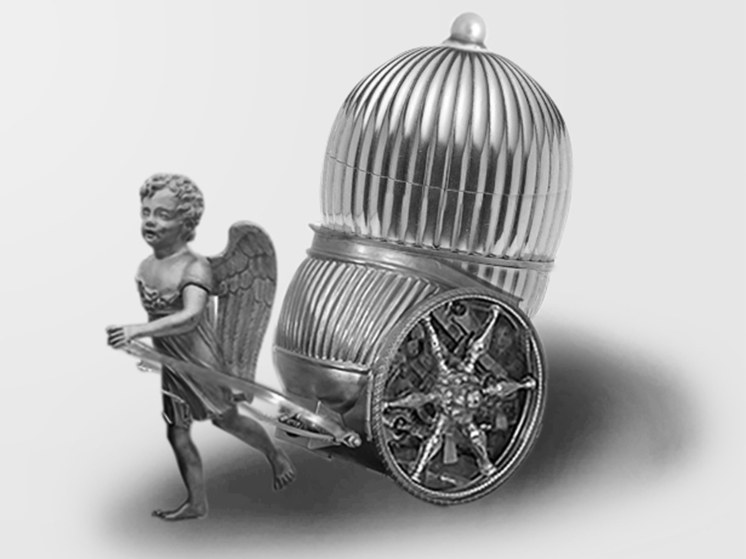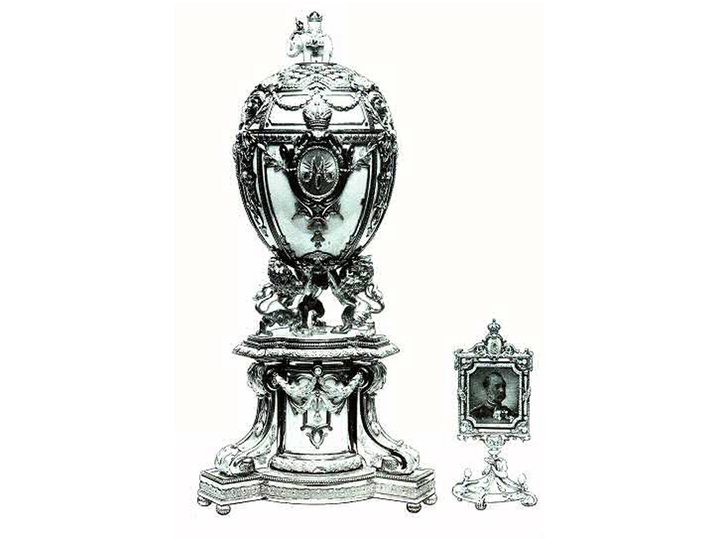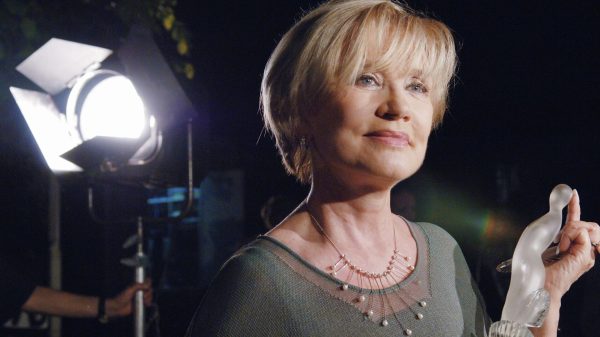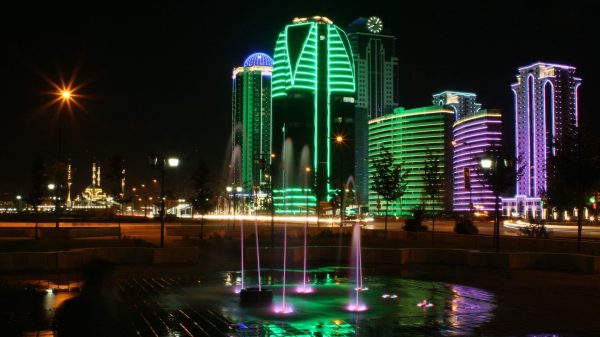Treasures that are still waiting to be discovered
There are many lost treasures in the world that have never been found. Some of these artifacts are now likely lost, but some may still exist and will one day be discovered. And, perhaps, completely by accident. «MK» has prepared a list of the most elusive riches of various nations.

Some of the world's most valuable treasures of historic moments remain unfound, archaeologists and historians say. Precious items, including royal regalia, highly sought-after weapons and the World Cup trophy, disappeared from view and were never seen again. Many of them belong to different cultures and have long traditions.
The pyramid of the Egyptian pharaoh Menkaure is the smallest of the three pyramids built at Giza about 4,500 years ago. In the 1830s, English military officer Howard Wise explored the pyramids at Giza, sometimes using dynamite, and went inside the structures.
Wise made a number of discoveries at Giza, including the discovery of an ornate sarcophagus in the Pyramid of Menkaure. In 1838, Wise attempted to smuggle the sarcophagus to England on the merchant ship Beatrice, but it sank. The sunken ship has not yet been found.
Between approximately 66 and 74 AD, Jewish rebels fought against the Roman army in an attempt to liberate the Kingdom of Israel from the rule of the Roman Empire. In 70, Jerusalem was captured by Roman troops led by the general Vespasian, who later became the Roman emperor. The Second Temple, at the time the most important religious building for the Jewish people, was destroyed and the Roman army carried its treasures back to Ancient Rome. Among these treasures was the temple menorah, a candlestick with six branches.
The Arc de Triomphe of Titus, located near the Colosseum in Rome, includes a scene depicting the movement of the menorah to the capital. Here it is presented as a massive object, almost as large as the soldiers carrying it. Some argue that the menorah was located in the Roman temple of peace known as the Forum of Vespasian, which burned to the ground in 191, but the fate of the Menorah remains unknown and uncertain.
The Aztec Empire in Mexico flourished in the early 16th century, but its ruler Montezuma was defeated when Hernán Cortés and the Spanish conquistadors arrived in 1519. Faced with an Aztec rebellion, Cortés and his troops attempted to leave the Aztec capital of Tenochtitlan under the cover of darkness on June 30, 1520, with a huge cargo of Aztec gold. But one of their ships sank in the now dry canal that flowed into Lake Texcoco, which led to the death of many Spaniards and the loss of part of the gold.
That night became known to the Spanish as “La Noche Triste,” or “The Night of Sorrow.” Some of this gold was found recently when a construction worker unearthed a gold bar in Mexico City at the site of what was once the Aztec capital.
Between 1885 and 1916, the Fabergé jewelry company, then run by Russian jeweler Peter Carl Fabergé, produced richly decorated Easter eggs for the Russian imperial family. According to history buff Corey Chappelle, each egg was a real treasure, and inside there were smaller jewels — for example, a golden crown inside a golden yolk inside a golden chicken (Faberge was very fond of the matryoshka principle). In total, 50 eggs were made for the royal family, which were confiscated by the Bolsheviks after the 1917 revolution. From 1885 to 1893, during the reign of Emperor Alexander III, ten eggs were produced; another 40 were created during the reign of his dutiful son Nicholas II, two per year, one for his dowager mother, the second for his wife.

Although historians can name many other Fabergé eggs, seven are still missing. Some of them are in private collections around the world. It is possible that some of them are now in the United States — documents have emerged indicating that at the end of the Cold War, shipments of antiques and artifacts worth about $164 million were sent from the Soviet Union to the United States. In 2012, an American scrap metal dealer discovered one of them on a shelf in his home.
Stolen from Dublin Castle in 1907, “the Crown Jewels of Ireland were not associated with any coronation ceremony and did not include the crown.” They consisted of the star of the Order of St. Patrick, set with precious stones, a diamond brooch and five gold collars of this order, all of which were the property of the Crown.
In 1783, when the Crown Jewels were created, Ireland was under British control. The jewelry was made from 394 stones taken from Queen Charlotte's Jewels and the Badge of the Order of Bath. Queen Charlotte was the wife of King George III. The jewels, according to historians, also included rupees received from the Mughal emperor and possibly precious stones donated by the Turkish sultan. The jewelry was kept in the library, and weak security was blamed for the robbery being possible.
The 137-carat yellow Florentine diamond from the Medici family was probably brought from India and reached Europe in the late 15th century. How and when it reached Europe remains a matter of debate. One story says that the Duke of Burgundy in 1467-1477, Charles the Bold, cut it from a larger diamond and was so fascinated by the Florentine diamond that he even took it with him to battle and was supposedly killed with it “in his pocket.”< /p>
At the end of the 17th century, when the last of the Medicis died, the Florentine diamond passed to the Austrian imperial family, at that time its value was 750 thousand dollars. After World War I, the last Emperor of Austria-Hungary, Charles I, fled with it to Switzerland, where he put it in a bank vault and entrusted it to an Austrian lawyer named Bruno Steiner, who would help the deposed royal family sell it, along with other royal jewels. It's unclear what happened next. News reports published in 1924 reported that Steiner had been arrested, charged with fraud, and acquitted.
Some believe it was stolen by someone close to the family. Some speculate that the diamond was broken into smaller stones and would therefore never be seen again.
The Jules Rimet Trophy is a prize awarded to the winning team of the FIFA World Cup. The trophy, named after World Cup founder Jules Rimet, was created by sculptor Abel Lafleur. It was “an image of the goddess of victory holding above her head an octagonal vessel made of gold with a base of semi-precious stones,” the international football organization FIFA said in a statement.
The trophy was first awarded in 1930 at the inaugural FIFA World Cup and passed from winner to winner every four years, but in 1970 Brazil won the competition for the third time. According to FIFA rules, the first team to win the World Cup three times was to receive permanent ownership of the Jules Rimet Trophy. Therefore, the cup was sent to Brazil, and a new World Cup trophy was created to replace the old one.
In 1983, the cup was stolen in Rio de Janeiro, and has not been seen since. The thieves may have melted down the cup, which was made mostly of gold and weighed about 6.1 kilograms.
This was not the first time the Jules Rimet trophy was stolen. In 1966, the cup was stolen from a Methodist hall in London and found a week later when a dog named Pickles and its owner David Corbett were found lying in a south London street, wrapped in newspaper and tied with twine, according to FIFA's website. The kidnapper or thieves who committed this robbery were never found.
The film “The Story of the Kelly Gang,” released in Australia in 1906, is considered by many to be the world's first feature-length film. It lasted over an hour and told the story of 19th century outlaw Ned Kelly and his gang. The film was a huge success, write film historians Sally Jackson and Graham Shirley.
“The film was shown in Melbourne on Boxing Day 1906 and captivated audiences across the country,” say Jackson and Shirley. — By the end of 1907, the film was presented in New Zealand and England, where it was called «the longest film ever made.»
The film's portrayal of a criminal gang brought him fame: «After being shown throughout There were reports of crime and censorship in the country. In May 1907, the film inspired five local children in the Victorian town of Ballarat to break into a photography studio to steal money, after which they led a group of schoolchildren out at gunpoint. In April, the Victorian Chief Secretary banned the film from being shown in Benalla and Wangaratta, two cities with strong ties to Kelly.
The film was never properly preserved, and by the 1970s only » some promotional materials and some photographs.” The discovery of fragments of the film, as well as restoration work, made it possible to uncover about a quarter of the film, but most of it remains lost.






















































Свежие комментарии